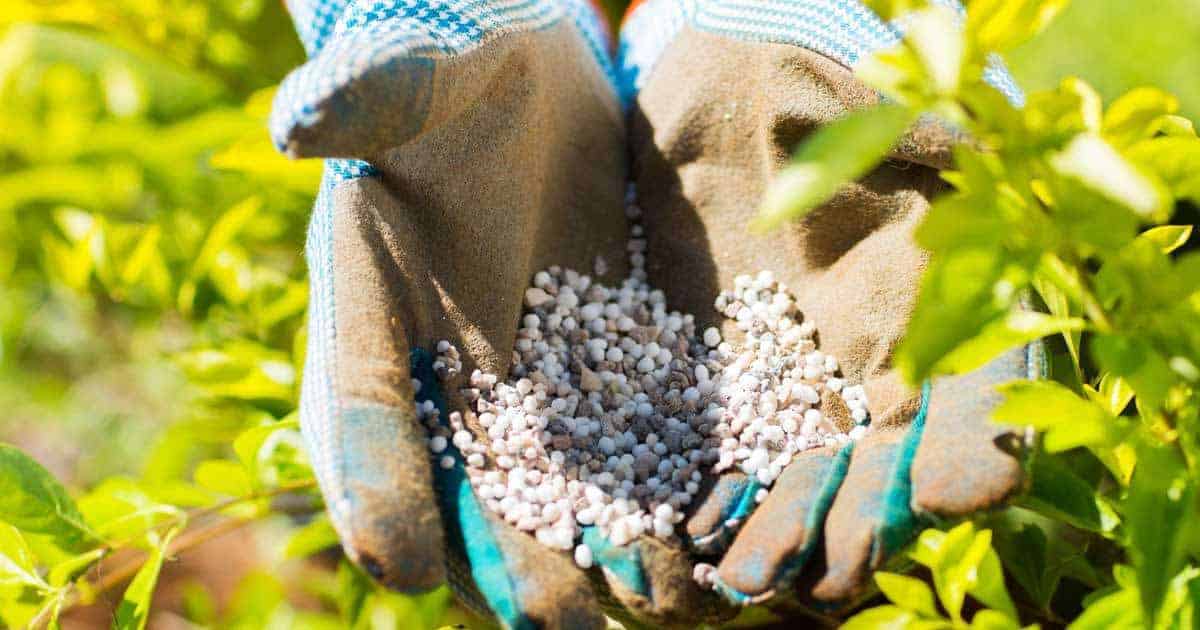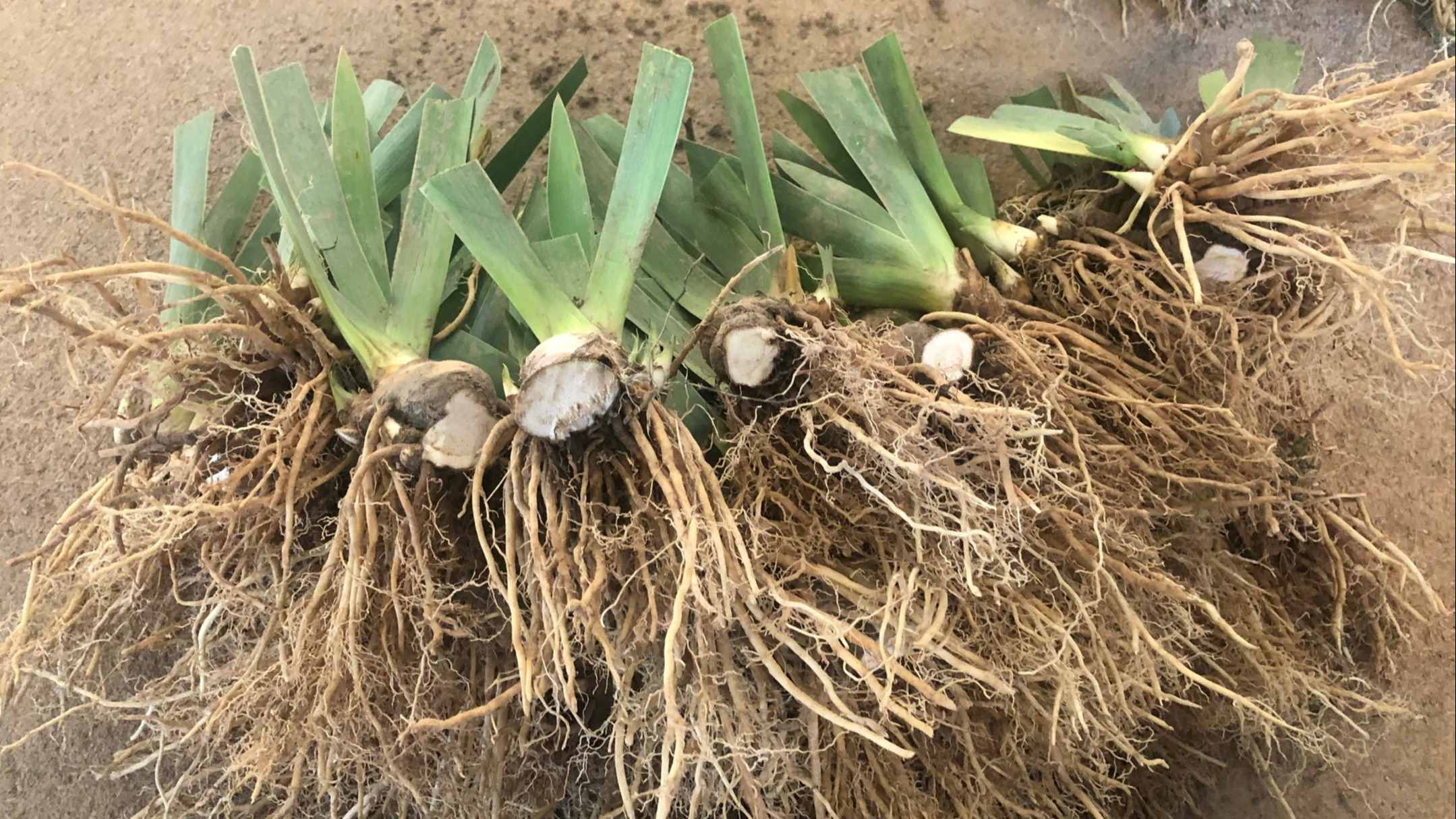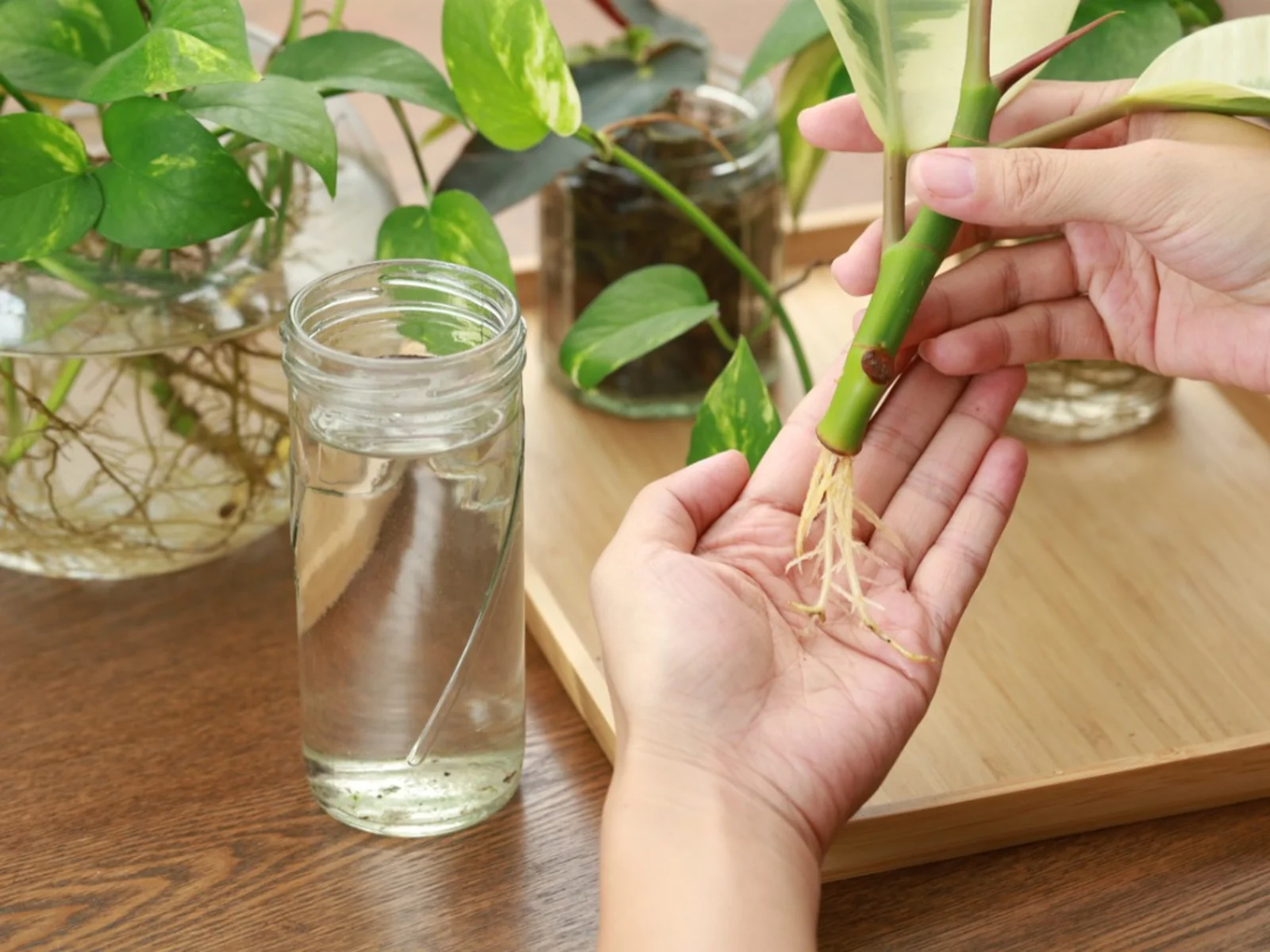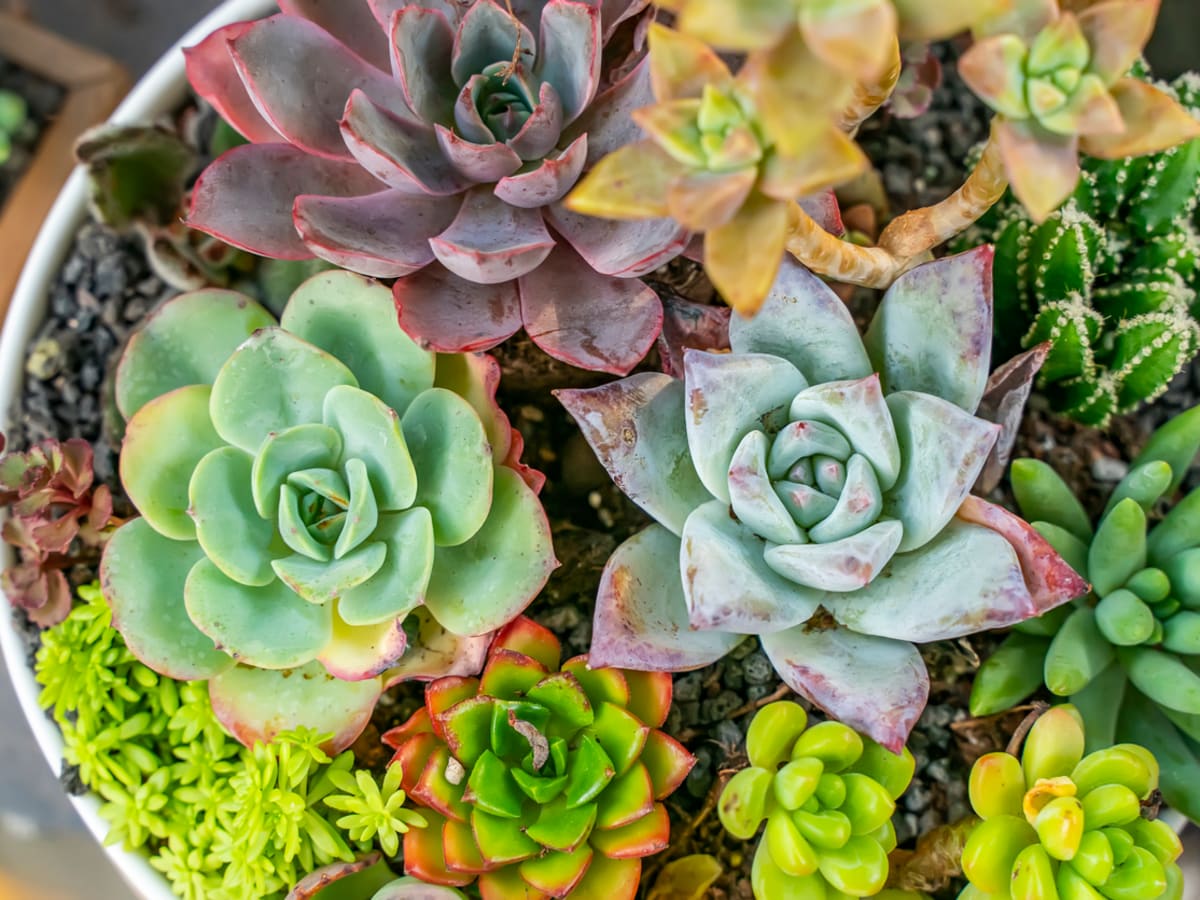Home>Gardening Techniques>Plant Care>How To Use Rooting Hormone On Succulents


Plant Care
How To Use Rooting Hormone On Succulents
Modified: January 22, 2024
Learn the best plant care tips for using rooting hormone on succulents and promote healthy growth. Enhance root development and propagation success with this helpful guide.
(Many of the links in this article redirect to a specific reviewed product. Your purchase of these products through affiliate links helps to generate commission for Chicagolandgardening.com, at no extra cost. Learn more)
Table of Contents
- Introduction
- What is Rooting Hormone?
- Benefits of Using Rooting Hormone on Succulents
- When to Use Rooting Hormone on Succulents
- Types of Rooting Hormones for Succulents
- Preparing Your Succulents for Rooting Hormone
- How to Apply Rooting Hormone on Succulents
- Mistakes to Avoid When Using Rooting Hormone on Succulents
- Monitoring and Caring for Rooted Succulents
- Conclusion
Introduction
Welcome to the world of succulents, where vibrant and resilient plants thrive with minimal care. If you’re a succulent enthusiast, you may already know that these fascinating plants have the ability to propagate from their leaves or stem cuttings. While succulents have a natural tendency to root and grow new plants, using a rooting hormone can significantly increase the success rate and speed up the process.
Rooting hormone is a fantastic tool that plant enthusiasts and gardeners use to encourage root formation on cuttings and improve overall success when propagating plants. It contains plant hormones, typically indole-3-butyric acid (IBA) or auxins, that stimulate cell division and root growth. The hormone is applied to the cutting’s wound, providing the necessary boost for roots to develop and establish themselves.
Using rooting hormone on your succulents can offer numerous benefits. It can enhance the success rate of propagation, especially for difficult-to-root varieties or slow-growing succulents. With the right application of rooting hormone, you can help your succulents establish strong root systems more quickly, leading to healthier and more robust plants.
In this comprehensive guide, we will explore the benefits of using rooting hormone on succulents. We will discuss when and how to use rooting hormone, the different types available, and the common mistakes to avoid. So, whether you’re a seasoned succulent grower or just starting out, read on to discover how rooting hormone can elevate your propagation success and help you create a thriving succulent collection.
What is Rooting Hormone?
Rooting hormone is a powdered or liquid substance that contains plant growth hormones, typically indole-3-butyric acid (IBA) or auxins. These hormones play a crucial role in stimulating root development and encouraging the growth of new plants from cuttings.
When a succulent cutting is taken, it lacks an established root system to absorb water and nutrients from the soil. This is where rooting hormone comes into play. By applying rooting hormone to the cutting, you provide it with a boost of hormones that promote cellular division and root growth.
Rooting hormones are available in different strengths, typically ranging from 0.1% to 0.8% concentration. The strength used depends on the type of plant and its rooting capabilities. For succulents, a lower concentration, such as 0.1% or 0.3%, is usually sufficient.
Rooting hormone can be found in either powdered or liquid form. The powdered form is easy to apply and can be sprinkled directly onto the cutting’s wound. On the other hand, liquid rooting hormone is typically used by dipping the cut end of the succulent cutting into the solution to coat it.
It’s important to note that rooting hormone is not a guarantee of success. While it can significantly increase the chances of successful rooting, other factors such as proper care, suitable growing conditions, and the health of the cutting also play a role in successful propagation.
In the next section, we will delve into the benefits of using rooting hormone specifically for succulents, and how it can enhance the propagation process for these unique plants.
Benefits of Using Rooting Hormone on Succulents
Using rooting hormone on succulents can offer several benefits that can significantly enhance the success of propagation. Here are some of the key advantages:
- Increased Success Rate: Succulents are known for their ability to propagate naturally, but using rooting hormone can give them an extra boost. The hormones in rooting hormone stimulate root growth, improving the chances of successful root formation on the cuttings. This is especially useful for slow-growing or difficult-to-root succulent varieties.
- Faster Root Development: Rooting hormone stimulates cell division and encourages the growth of new roots. This means that the succulent cuttings treated with rooting hormone will develop a strong root system more quickly compared to untreated cuttings. Faster root development leads to faster establishment of the plant and quicker growth.
- Healthier Root Systems: The use of rooting hormone helps in the development of stronger and healthier root systems. Well-developed roots improve the plant’s ability to absorb water and nutrients from the soil, leading to overall healthier and more vigorous succulent plants. This enhanced root system also enhances the plant’s ability to withstand stress, such as drought or transplanting.
- Propagation of Rare or Limited Succulents: Rooting hormone can be particularly beneficial when propagating rare or limited succulent varieties. These plants can be challenging to find or expensive to purchase, making propagation a desirable option. Using rooting hormone increases the chances of success, allowing you to propagate and grow more plants of these valuable varieties.
- Preserving Genetics: If you have a favorite succulent with desirable traits, using rooting hormone ensures that the cloned plants share the same genetic characteristics. This preservation of genetics is crucial if you want to maintain specific plant traits, such as vibrant colors or unique leaf shapes, in your succulent collection.
By utilizing rooting hormone on your succulent cuttings, you can maximize your success rate, accelerate root development, and cultivate healthier plants. It’s a valuable tool for succulent enthusiasts who want to propagate their own plants and expand their collection. In the next section, we will discuss the optimal timing for using rooting hormone on succulents.
When to Use Rooting Hormone on Succulents
Knowing the right time to use rooting hormone on succulents is crucial for achieving the best results in propagation. Timing plays a significant role in the success of root development and overall plant health. Here are some guidelines to follow:
- Propagating Succulent Cuttings: If you’re planning to propagate succulents from stem or leaf cuttings, it’s generally recommended to use rooting hormone. This is especially true for slow-growing succulents or those with a lower success rate for rooting. Rooting hormone provides a boost to the cuttings, promoting the development of new roots and increasing the chances of successful propagation.
- During the Active Growing Season: The ideal time to use rooting hormone on succulents is during their active growing season. For most succulents, this is typically in the spring or summer when they are actively producing new growth. During this time, the succulents are more receptive to rooting hormone, and the hormones can work more effectively to stimulate root development.
- Healthy and Disease-Free Cuttings: It is important to ensure that the succulent cuttings you plan to treat with rooting hormone are healthy and free from any diseases or pests. Unhealthy or damaged cuttings may have a lower chance of successful root development, even with the use of rooting hormone. Selecting healthy and disease-free cuttings will increase your chances of success.
It’s worth noting that not all succulents require the use of rooting hormone. Some succulents are naturally more inclined to root easily, and using rooting hormone may not be necessary. However, for slower-growing or more challenging varieties, the use of rooting hormone can significantly increase the success rate of rooting and propagation.
With the timing considerations in mind, you’ll be able to optimize the use of rooting hormone and increase your chances of successful propagation. In the next section, we will explore the different types of rooting hormones available for succulents.
Types of Rooting Hormones for Succulents
When it comes to rooting hormones for succulents, there are a few different types available. Each type has its own advantages and may be more suitable depending on the specific needs of your succulents. Here are the main types of rooting hormones:
- Powdered Rooting Hormone: Powdered rooting hormone is one of the most common types available. It typically contains a synthetic form of auxin, such as indole-3-butyric acid (IBA). Powdered rooting hormone is easy to use and can be sprinkled directly onto the cut end of the succulent cutting. It adheres well to the wound and provides consistent hormone exposure.
- Liquid Rooting Hormone: Liquid rooting hormone is another popular choice, particularly for those who prefer a more precise and controlled application. Liquid rooting hormone comes in a concentrated form, and you typically need to dilute it with water according to the manufacturer’s instructions. The cut end of the succulent cutting is then dipped into the diluted solution, allowing the hormone to coat the wound.
- Gel Rooting Hormone: Gel rooting hormone has gained popularity because of its ease of use and ability to adhere well to the cutting’s wound. The gel formulation usually contains a synthetic auxin, similar to powdered rooting hormone. Gel rooting hormone is applied by carefully coating the cut end of the succulent cutting with the gel, ensuring a thick and even layer.
When choosing a rooting hormone for your succulents, it’s important to consider the specific needs of your plants and your personal preference. Some gardeners may have better success with one type over another, so it may be worth experimenting to find the best option for your succulents.
Additionally, it’s essential to follow the manufacturer’s instructions for proper application and storage of the rooting hormone. This will ensure its effectiveness and longevity.
Now that you are familiar with the types of rooting hormones available, it’s time to learn how to prepare your succulents before applying the rooting hormone. This will help ensure the best chances of successful propagation. Keep reading to discover the essential steps for preparing your succulents.
Preparing Your Succulents for Rooting Hormone
Before applying rooting hormone to your succulent cuttings, it’s important to properly prepare them to maximize the chances of successful rooting. Following these steps will help ensure the best results:
- Select Healthy Cuttings: Choose healthy succulent cuttings with no signs of pests, disease, or damage. Healthy cuttings have a higher chance of successful root development and overall plant growth.
- Allow Cuttings to Callus: Succulent cuttings need to callus before applying rooting hormone. This refers to the process of the cut end forming a protective layer. Place the cuttings in a dry, well-ventilated area for a few days to allow callus formation. This step helps prevent rotting and infection when the cuttings are placed in the rooting medium.
- Choose an Appropriate Potting Medium: Succulents require a well-draining potting medium to prevent excess moisture around the roots. A mix of cactus soil and perlite or pumice works well for most succulents. Fill a small pot with the potting medium and lightly moisten it before potting the cuttings.
- Make a Clean, Slanted Cut: When preparing the cuttings, make a clean cut below a leaf node or joint. The cut should be slanted to increase the surface area available for root development.
- Apply Rooting Hormone: After the cuttings have callused, it’s time to apply rooting hormone. If using powdered or gel rooting hormone, gently dip the cut end of the succulent cutting into the hormone, ensuring it covers the bottom inch of the stem. If using liquid rooting hormone, follow the manufacturer’s instructions for dilution and apply it as directed.
Once the rooting hormone has been applied, gently tap off any excess powder or shake off any excess liquid. Allow the cuttings to dry for a short period before potting them in the prepared potting medium.
Remember, rooting hormone is an aid to encourage root development, but it’s not a guarantee of success. Other factors such as proper care, suitable light and temperature conditions, and regular watering are essential for successful rooting and plant growth.
Now that your succulents are prepared for rooting hormone application, it’s time to learn how to properly apply the hormone for the best results. Read on to discover the step-by-step process of applying rooting hormone to your succulent cuttings.
How to Apply Rooting Hormone on Succulents
Applying rooting hormone to your succulent cuttings is a straightforward process. Follow these steps to ensure proper application:
- Prepare the Rooting Hormone: If using powdered rooting hormone, pour a small amount into a separate container. This prevents contamination of the main container. If using gel or liquid rooting hormone, ensure the container is properly sealed and shake it gently to mix the solution.
- Dip or Coat the Cut End: Carefully take a succulent cutting and dip the cut end into the rooting hormone powder, making sure it is fully covered. Alternatively, if using gel or liquid rooting hormone, use a small brush or applicator to coat the cut end with a thick, even layer of gel or liquid.
- Tap off Excess: After dipping or coating the cut end, gently tap off any excess rooting hormone powder or shake off any excess gel or liquid. This helps ensure that the hormone is evenly distributed and prevents excessive buildup, which can impede root growth.
- Place in Proper Growing Medium: Once the cut end of the succulent cutting has been coated with rooting hormone, place it in a well-draining potting medium, such as a mix of cactus soil and perlite or pumice. Ensure that the cutting is planted deep enough to provide stability while leaving the majority of the treated portion exposed to air.
- Provide Adequate Care: After potting the succulent cuttings, place them in a warm, well-lit area, but away from direct sunlight. Mist the cuttings lightly to maintain a slightly moist environment, but be careful not to overwater. Over time, as the roots develop, you can gradually decrease the frequency of misting and transition to regular watering.
Remember to label the pots or use markers to identify the different succulent varieties. This will help you keep track of their progress and ensure proper care for each individual cutting.
Proper care and maintenance after applying rooting hormone are crucial for successful root development. Monitor the cuttings regularly, looking for signs of root growth, such as new shoots or leaves emerging from the stem. Be patient, as it can take several weeks or even months for roots to develop, depending on the succulent variety.
With proper application of rooting hormone and appropriate care, you’ll be on your way to successfully propagating your favorite succulent varieties. In the next section, we will explore common mistakes to avoid when using rooting hormone on succulents.
Mistakes to Avoid When Using Rooting Hormone on Succulents
Using rooting hormone on succulents can greatly improve the success rate of propagation, but it’s important to avoid certain common mistakes that can hinder the process. By being mindful of these potential pitfalls, you can increase your chances of successfully rooting and growing new succulent plants. Here are some common mistakes to avoid:
- Using Too Much Rooting Hormone: While rooting hormone is beneficial, using too much can be counterproductive. Excessive amounts of rooting hormone can overwhelm the cutting, leading to hormone buildup or damage to the delicate tissues. Follow the manufacturer’s guidelines for dosage and application to ensure the proper amount is used.
- Not Allowing Cuttings to Callus: It’s essential to allow the cut ends of succulent cuttings to callus before applying rooting hormone. This allows a protective layer to form, reducing the risk of rotting or infection. Rushing the process and not allowing enough time for callusing can impede the rooting process.
- Failing to Provide Adequate Drainage: Succulents require well-draining soil to prevent waterlogging and root rot. Planting succulent cuttings in soil that retains excessive moisture can suffocate the roots and hinder their development. Ensure the potting medium has adequate drainage by adding perlite, pumice, or sand to improve soil structure.
- Overwatering or Underwatering: Proper watering is crucial during the rooting process. Overwatering can lead to rot, while underwatering can cause the cutting to dry out and hinder root development. Find the right balance by lightly misting the cuttings to maintain a slightly moist environment, and gradually transition to regular watering as the roots develop.
- Placing Cuttings in Direct Sunlight: While succulents thrive in bright light, direct sunlight can be too intense for newly planted cuttings. Placing them in direct sunlight can lead to sunburn or excessive transpiration, which can impede root development. Opt for bright, indirect light instead and gradually acclimate the cuttings to more sunlight over time.
- Using Unhealthy or Weak Cuttings: Choosing healthy and disease-free succulent cuttings is essential for successful root development. Weak or damaged cuttings have a lower chance of survival and may struggle to produce strong roots, even with the help of rooting hormone. Select cuttings that are plump, firm, and free from signs of pests or diseases.
By avoiding these common mistakes, you can provide the best possible environment for your succulent cuttings to root and thrive. Keep a close eye on the cuttings, monitor their progress, and make adjustments to their care routine as needed. With patience and proper technique, you’ll be rewarded with healthy, rooted succulents.
Now that you know what to avoid, let’s talk about how to monitor and care for your rooted succulents in the next section.
Monitoring and Caring for Rooted Succulents
Once your succulent cuttings have successfully rooted, it’s important to continue monitoring and providing proper care to ensure their continued health and growth. Here are some key considerations for monitoring and caring for rooted succulents:
- Watering: Established succulent roots are more efficient at absorbing water, so adjust your watering routine accordingly. Water the rooted succulents sparingly, allowing the soil to dry out between waterings. Overwatering can lead to root rot, so it’s better to err on the side of underwatering with succulents.
- Lighting: Succulents thrive in bright light conditions. Ensure that your rooted succulents are receiving an appropriate amount of light. Place them in a sunny spot, preferably in a south or west-facing window, or provide supplemental grow lights if natural sunlight is limited. Monitor their growth and adjust their placement accordingly.
- Temperature and Humidity: Succulents generally prefer warmer temperatures and low humidity. Maintain indoor temperatures around 65°F to 75°F (18°C to 24°C) during the day and slightly cooler at night. Avoid placing succulents near drafts or in cold or overly humid environments, as these conditions can stress the plants.
- Nutrition: While succulents are adapted to low-nutrient environments, they still benefit from occasional fertilization. Use a balanced, diluted fertilizer specifically formulated for succulents. Apply it sparingly during the growing season, following the manufacturer’s instructions. Over-fertilizing can cause excessive growth and make succulents more prone to damage.
- Monitor for Diseases and Pests: Regularly inspect your succulents for signs of pests or diseases. Common pests that may affect succulents include mealybugs, aphids, and scale insects. If you notice any signs, such as webbing, sticky residue, or distorted leaves, take prompt action using appropriate organic or chemical methods to control the infestation.
- Re-potting: As your rooted succulents grow, they may outgrow their current pots. Look for signs such as roots protruding from the drainage holes or the plant becoming top-heavy. When re-potting, use a well-draining soil mix and select a slightly larger pot that allows for future growth. Handle the plants with care, being mindful of their delicate roots.
By regularly monitoring and providing the necessary care, you can ensure that your rooted succulents continue to thrive and grow into healthy, mature plants. Each succulent variety may have slightly different care requirements, so familiarize yourself with the specific needs of each species or variety in your collection.
With patience, proper care, and regular observation, your rooted succulents will reward you with their unique beauty and resilience. Continue to learn and experiment, and soon you’ll become a successful succulent propagation expert.
Now that you have gained a comprehensive understanding of using rooting hormone on succulents and caring for rooted plants, you’re ready to embark on your propagation journey. Enjoy the rewarding process of growing new succulents and expanding your collection!
Conclusion
Congratulations! You’ve reached the end of this comprehensive guide on using rooting hormone on succulents. Armed with this knowledge, you are well-equipped to enhance your succulent propagation success and grow a thriving collection of these captivating plants.
Rooting hormone is a valuable tool that can significantly increase the chances of successful root development and expedite the growth of new succulent plants. By providing the necessary boost of plant hormones, rooting hormone helps cuttings establish strong root systems more quickly, leading to healthier and more resilient plants.
Throughout this guide, we’ve explored the benefits of using rooting hormone on succulents. We’ve discussed the different types of rooting hormones available, the ideal timing for application, and the essential steps for preparing your succulents. We’ve also covered the process of applying rooting hormone correctly and highlighted common mistakes to avoid. Lastly, we discussed the importance of monitoring and providing proper care for rooted succulents to ensure their continued health and vitality.
Remember, mastering the art of succulent propagation takes time, practice, and patience. Each succulent variety may behave differently, so don’t be discouraged if not every cutting successfully roots. Enjoy the journey of learning and experiment with different techniques to find what works best for you and your succulents.
Now, armed with your newfound knowledge, go forth and let your love for succulents flourish. Create your own succulent gardens and share your passion with others. Happy propagating!









